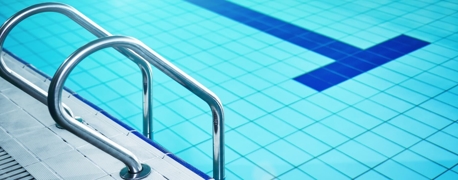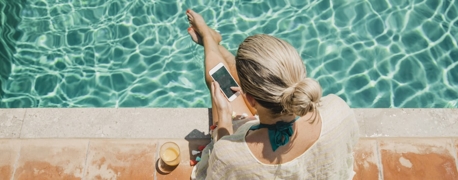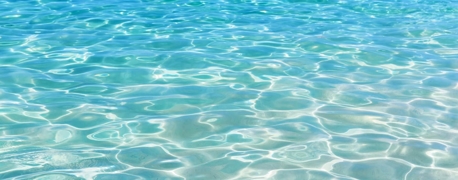Hidden Pool & Hot Tub Hazards: Teaching Kids Safety

For kids, nothing says summer like splashing in a pool, bubbling in a hot tub, or cannonballing off the side with friends. For parents, though, that fun often comes with a little worry. We all know drowning is a risk, but what about the hidden hazards we don’t always think about?
The good news: water safety doesn’t have to be about fear. It can be about confidence, fun, and simple lessons that kids will carry with them. By teaching children to spot the less-obvious dangers around pools, spas, and hot tubs, parents can actually make safety a family game—and create more room for joy.
The “Pool's Flusher” – Drain Suction
Kids love exploring every corner of a pool, but drains aren’t just another toy. They act like powerful vacuums, pulling in water with enough force to trap even strong swimmers. Between 1985 and 2002, at least 133 entrapment incidents were reported to the US Consumer Product Safety Commission (CPSC), including 33 fatalities.
In one tragic case, 7-year-old Virginia Graeme Baker drowned after being pinned by a hot tub drain. The suction was so strong that multiple adults couldn’t free her in time. Her death spurred the Virginia Graeme Baker Pool & Spa Safety Act, which since 2008 has required anti-entrapment drain covers in public pools. That law has saved lives—no child deaths have been reported from public pool entrapments since it passed.
But not all older pools and spas are retrofitted. CPSC data from 2014—2018 still recorded 11 entrapment incidents, most involving children under 15, with hot tubs accounting for nearly two-thirds.
Teaching tip for kids: explain drains as the “pool’s toilet flush” and make a game out of avoiding them. Set a rule that kids stay three big steps away from drains.
The “Bad Smells” – Pool Chemicals
Chlorine and other pool chemicals are what keep water clean—but mishandled, they can become dangerous. According to the CDC, pool chemicals send about 4,500 people to emergency rooms each year in the US. About one-third of victims are children or teens, and over half of incidents happen in backyard pools.
The injuries range from eye burns and skin rashes to severe breathing trouble caused by toxic gas exposure. In 2017, a Florida equipment failure released chlorine gas into a pool during swim lessons, hospitalizing five children with nausea and vomiting.
Teaching tip for kids: turn this into a superhero lesson. Chlorine is the “guardian” that fights germs, but it’s powerful and must be respected. Show them how a slight pool smell means the water’s clean, but a strong chemical smell means something’s wrong and they should stay away.
The “Cloudy Day” – Water Clarity
A sparkling pool isn’t just pretty—it’s safe. Experts warn that if you can’t see the drain at the bottom from the deck, the pool should be closed. Murky water hides what’s beneath the surface, and that can be deadly. In Fall River, Massachusetts, a woman drowned in a public pool in 2011. Her body remained undetected for two days because the water was too cloudy; swimmers even used the pool while she lay at the bottom.
Of course, that’s far too scary to explain to a young child, so we have a suggestion.
Teaching tip for kids: make it a game called “Can You See the Bottom?” If they can’t spot the drain, they know it’s time to stay out.
The “Slip Zone” – Wet Decks
Kids running around the pool deck is as classic as summer itself. But slick surfaces send thousands of people a year to hospitals with slip-and-fall injuries, according to various sources. Many are kids who end up with broken bones, concussions, or worse. Even adults are at risk: brain damage or spinal injuries from slips and falls on hard concrete can be devastating.
Teaching tip for kids: introduce the rule of “Penguin Feet Only.” Walk like a waddling penguin on wet decks. To make it fun, let kids play “safety captain” and remind adults if they forget.
The “Too-Hot Tub” – Spa Risks
Hot tubs might look like mini-pools, but they’re a completely different environment. Water temperatures of 102—104°F can quickly overwhelm a child’s smaller body. The CDC recommends children under 5 never enter a hot tub, and even older kids should limit time to 5–10 minutes at lower temperatures.
Overheating can cause dizziness or fainting, which can turn deadly while immersed. Spas are also often less supervised, leading to preventable drownings.
Teaching tip for kids: frame hot tubs as “rest zones” instead of play zones. Teach them that it’s a place to relax, not jump or swim. If they start feeling too warm, encourage them to hop out and cool down.
The “Hidden Blanket” – Covers
Covers are meant to protect pools and spas when not in use. But if misused, they can hide or even trap swimmers. In 2019, 14-year-old Nabila Maazouz drowned during swim practice in Oregon after a heavy pool cover was pulled on while she was still in the water. She remained trapped beneath for 20 minutes before being discovered.
Covers can also give a false sense of security. In 2025, a 3-year-old boy in Arizona drowned in his family’s pool after the safety net cover was removed for maintenance and not replaced for several days.
Teaching tip for kids: explain that covers are for when “the pool is sleeping.” They’re not trampolines, hiding places, or toys.
Turning Safety Lessons into Games
Water safety lessons stick best when they’re interactive. Parents can make safety fun by:
- Role-playing lifeguard drills: ask kids to point out exits, spot the lifeguard, or show where a floatation device is.
- Floating contests: who can float like a starfish the longest?
- Treading-water challenge: make it a timed game with siblings.
- Buddy teaching: let older kids “teach” younger ones the rules, reinforcing their own knowledge.
These little games make safety habits second nature.
How Parents Can Build Confidence
Teaching kids is one half of the equation. The other half is what parents do to ensure their environment is safe.
- Inspect drain covers: Ensure they’re intact and VGB-compliant.
- Ask about maintenance: How are chemicals stored? Are staff trained for emergencies?
- Enforce barriers: Make sure fences, gates, and locked covers are in place at home.
By turning vigilance into routine, parents can model responsibility—and free their kids to focus on fun.
More Fun, Less Worry
Water should be where families make their happiest memories. By turning safety lessons into games, teaching kids to recognize hidden hazards, and making routine checks part of family life, parents gain peace of mind and kids gain confidence. These simple steps prevent accidents while empowering children to actively participate in their own safety. The result is more freedom, more laughter, and more moments where families can relax and enjoy the water together.
Arnold & Itkin has seen how hidden hazards change lives forever. The best protection is knowledge parents can put into practice. With these tools, pools, spas, and hot tubs can remain what they were meant to be: places of joy, connection, and lasting memories.


